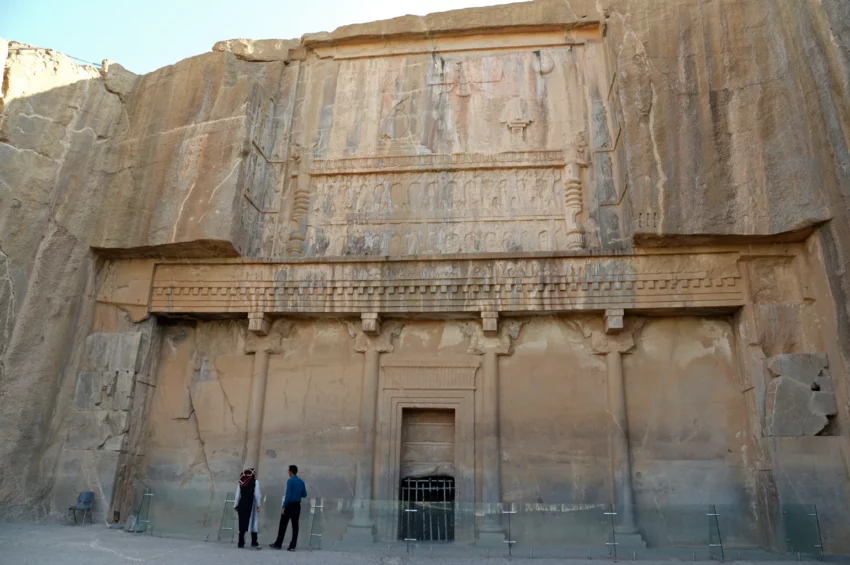Get your dose of History via Email
Introduction to Artaxerxes III
Artaxerxes III, born Ochus, was the Great King (Shah) of the Achaemenid Empire from 358 BC until his death in 338 BC. His reign, which succeeded that of his father, Artaxerxes II, was characterized by dynamic military campaigns, extensive building projects, and assertive administrative reform. His accomplishments are reflective of his efforts to restore the Achaemenid Empire’s authority, which had waned under his predecessors.
Early Life and Rise to Power
Prior to becoming king, Artaxerxes III held the title of “Prince of the Realm,” a position that indicated he was the designated successor to Artaxerxes II. His ascension in 358 BC was marked by the elimination of potential rivals, a testament to the tumultuous politics that were symptomatic of the late Achaemenid period. His consolidation of power was ruthless, as he is believed to have had his own brothers, including royal prince Cyrus the Younger, put to death to secure his position as monarch.
Military Campaigns and Foreign Policy
The foreign policy of Artaxerxes III was particularly aggressive. He devoted much of his effort to reviving the empire’s control over Egypt, which had been lost during his father’s reign. In 351 BC, his attempt to recapture the region failed, but he persevered, and in 343 BC, after several years of careful preparation and military improvement, Artaxerxes III successfully reasserted control over Egypt. His campaigns also extended to Asia Minor and Persis, where he quelled revolts and maintained Achaemenid dominance. These efforts helped Artaxerxes III to strengthen the empire and to demonstrate his military prowess, thereby solidifying his control over his domains.
Administrative Reforms and Building Projects
Domestically, Artaxerxes III implemented widespread administrative reforms to enhance his power and control over the empire. He undertook a revision of tax levies and relocated disenfranchised people to newly conquered towns after military campaigns. His internal policies focused on bolstering the central authority, likely in response to the decentralizing influences and provincial autonomy that had grown in the previous decades.
In terms of building projects, Artaxerxes III continued the Achaemenid tradition of monumental construction. His restorative works in cities like Susa and Persepolis stand testament to his contributions to architecture and imperial grandeur. These efforts were part of his broader strategy to reaffirm the cultural and political hegemony of the Achaemenid dynasty.
Death and Succession
The conclusion of Artaxerxes III’s reign was as violent as its commencement. He died in 338 BC under mysterious circumstances, and it is widely believed that he and his son were poisoned by the vizier Bagoas. Bagoas had been a powerful figure throughout the latter part of Artaxerxes’ reign, and his influence further extended into the following reign of Artaxerxes IV Arses, whom he also eventually murdered. The frequent coups and murders during this period underscore the volatile nature of the imperial court and the inherent instability of the late Achaemenid Empire.
Legacy of Artaxerxes III
The reign of Artaxerxes III is marked by a notable effort to reclaim the might and stability of the Achaemenid Empire. Through his military conquests and internal reforms, he temporarily checked the empire’s decline, although he could not ultimately reverse the trend. His harsh methods of maintaining control point to the challenges he faced as a ruler during a time of great internal and external pressures. The dynamics of his reign would set the stage for the eventual Macedonian conquest under Alexander the Great, sparking the end of the Achaemenid era and the beginning of Hellenistic influence in the ancient Near East.
Sources:


2 thoughts on “Tomb of Artaxerxes III in Persepolis”